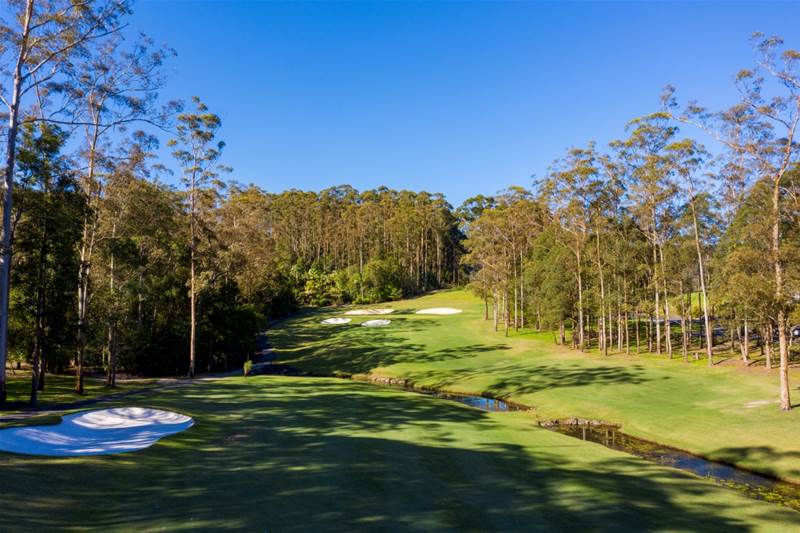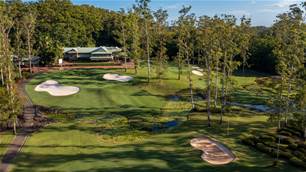There are just a handful of places along the length of Australia’s East Coast where the majestic Great Dividing Range comes close to meeting the edge of the Pacific Ocean. The Coffs Coast, almost halfway between Sydney and Brisbane via the Pacific Highway, is one of those places.
The sub-tropical climate here provides what has often been described as one of the most liveable environments in the country.
Surrounded by National Parks and looking out to the magnificent Solitary Islands Marine Park, Coffs Harbour – the region’s hub – is famously home to Australia’s first ‘Big Thing’ – the Big Banana. But there’s certainly plenty more to enjoy here.
There’s a wide range of exciting activities including fishing, scuba diving, white-water rafting and dolphin spotting complements the abundant natural attractions and uncrowded beaches. There are also impressive resorts and hotels to choose from while foodies will love the award-winning cafés and restaurants in abundance across the region.
And then, of course, there is the fine selection of golf courses to play.
Any golf holiday on the Coffs Coast must include at least one round at Bonville Golf Resort – a mainstay of Golf Australia magazine’s Top-100 Courses ranking for the past two decades and has been voted Australia’s Favourite Course by our readers every year since 2016. One round here and you will agree the plaudits are well-deserved.

Bonville boasts dramatic undulating fairways lined by flooded gums, patches of sub-tropical rainforest, tranquil ponds and more testing water hazards, which all combine to create a magnificent setting to play the game.
The greatest strides in Bonville’s evolution have occurred during the past decade with the playing surfaces and bunkering being consistently presented to a five-star standard.
One of the highlights of this Ted Stirling and Terry Watson-designed layout is its call to pull the driver from your bag and have a lash. There are few more spectacular sights than watching your drive from one of the many elevated tees sailing above and then between the strands of flooded gums lining the fairway. The 346-metre 2nd is one such hole where the fairway descends gradually from the tee and slopes markedly from right-to-left as it turns at 45 degrees right and climbs to the green. Trying to cut the corner with your tee shot is fraught with danger as flooded gums and bunkers come into play. Ideally, a faded drive down the centre of the fairway will leave you a mid- to short-iron approach to the green. Bunkers come into play around the green but it is the majesty of the flooded gums either side of the fairway and green that will take your breath away.
The same Bonville ‘magic’ will impress as you prepare to drive from the photogenic 18th hole. The 460-metre closer is not a long par-5 by modern standards, particularly when the second half of the hole is downhill. A well-struck tee shot here to the crest of a hill will leave you with a decision to make – do you go for the green or do you lay-up, and where? Before you load up, soak in the view. Strategy is all-important here, as a bunker and a stream cutting through the fairway short of the green come into play. Some longer hitters may only require a mid- to short-iron to the green after driving over the hill, but it remains a tough approach, which ideally needs to be left on the low side of the hole.

Long before the establishment of the Bonville Golf Resort in 1992, the Coffs Harbour Golf Club – just minutes from the centre of town – was gaining acclaim for its challenging layout. In fact, there was a long period of time during the 1950s and ‘60s when Australia’s best players and a few overseas stars were annual regulars for the North Coast Open.
The honour board for the event reads like a who’s who of golf in that era. Ten years before he won the centenary Open Championship, Kel Nagle was a victor at Coffs Harbour. He won three of the next four titles before handing over the winner’s baton to the great South African Gary Player, who won twice. A young Bruce Crampton followed with former Australian Open champ Frank Phillips, the legendary Norman Von Nida also picking up a winner’s cheque. Billy Dunk snared four titles between 1966 and 1971, a few years before the event became an amateur open event. The North Coast Open – the first tournament in Australia to be played as four rounds over four days – has been played at Coffs Harbour for more than six decades and during that time there have been plenty of major changes made to the original course.
“Subtle elevation changes and a wide variety of different holes requiring a range of shots, combined with beautifully manicured fairways and greens, make Coffs a favourite for me.” Top-100 ranking judge Daniel O’Keefe.
The club moved to its present site in 1938 with Carnegie Clark designing the original nine-holes. Course designer Arthur East oversaw the extension of the layout to 18 holes less than 12 months before Nagle’s 1951 North Coast victory. A further nine holes were added in the early ‘70s, while all the putting surfaces were converted to Bermuda Tifgreen 328 grass in the late ‘80s.
More recently, former PGA Tour player and course designer Craig Parry has worked closely with course superintendent Justin Sheehan to implement some design changes on key holes ahead of creating a masterplan for further renovations.
Coffs Harbour not only boasts a wonderful history, it is one of the most challenging and best-maintained layouts in regional NSW, which didn’t go unnoticed by Golf Australia magazine ranking judges as the Lakes Course (Holes 1-18) rose four places to No.85 in 2023.
“Subtle elevation changes and a wide variety of different holes requiring a range of shots, combined with beautifully manicured fairways and greens, make Coffs a favourite for me,” ranking judge Daniel O’Keefe said.
Related Articles

Aussie golf stars praise Open's return to traditions
Heartbreak for Aussies at history-making Asia-Pacific Amateur

_Header.jpg&h=600&w=850&c=0&s=1)











